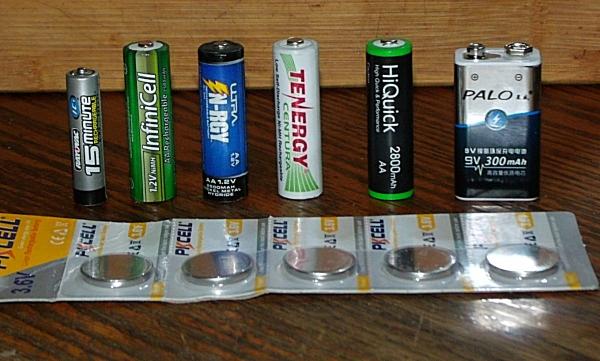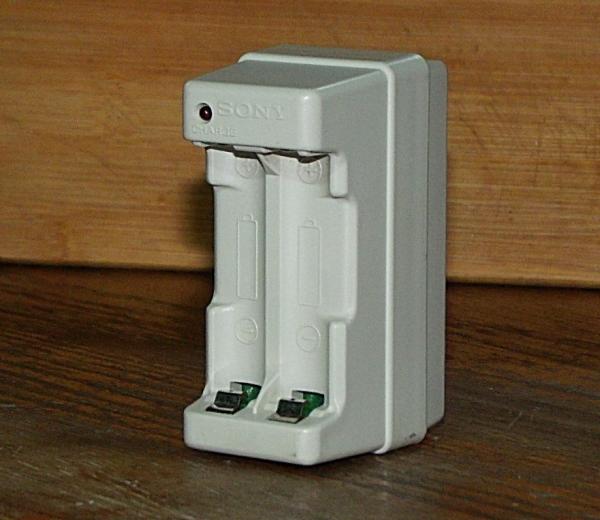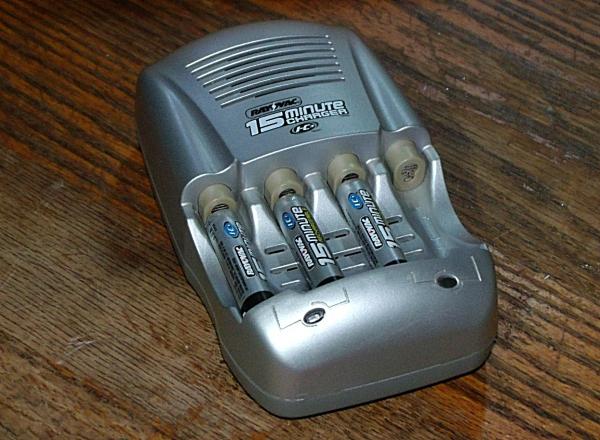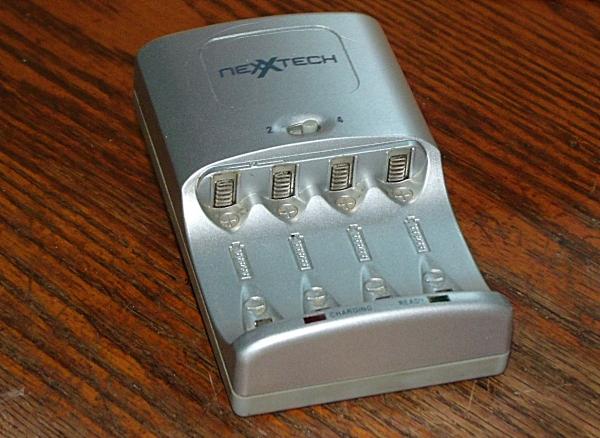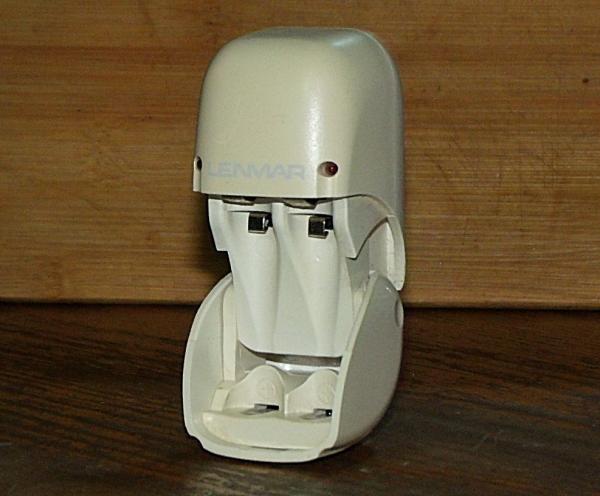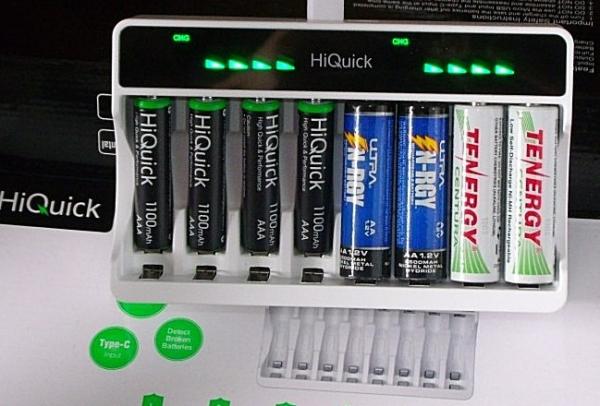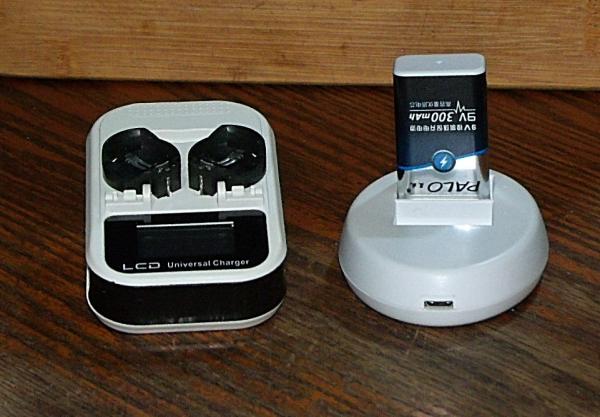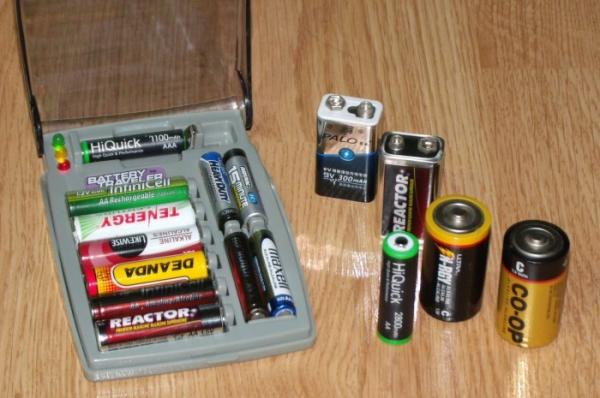Don’t ask me why, but there’s something about the idea behind rechargeable battery technology that always fascinated me. I’ve been buying them for over thirty years. And without it being my intention, here is yet another obscure collection of technology I have in my possession.
I suppose one of the reasons that I was drawn to the idea of rechargeable batteries was because, as a teenager (like many teens in the 80s) I had a portable cassette player (a.k.a. “Walkman”) and went through a lot of batteries listening to it. And like most teenagers, I didn’t have a lot of money to spend on things like AA batteries. So, when I found out about rechargeable batteries (back then they were NiCads), these where what I invested my money in, rather than spending my hard earned money on batteries I would later just throw away.
Although it did take some planning to make sure I always had a set of batteries fully charged and ready to go, it felt good being able to provide for my own power needs, without having to continuously fork out cash to battery manufacturers to enjoy my electronic devices. In my mind, I was giving the middle finger to the over-bearing , money hungry corporate giants. It was literally David versus Goliath. I guess I still feel that way.
Sony BC-800U
I don’t have the original batteries or charger I had way back in the 80s, but I still have one of my early NiCad chargers, from (what I’m guessing to be) the early 90s. It’s my Sony BC-800U, which was used mostly to charge batteries for my portable cassette player.
It’s a pretty simple “wall wart” design that charged two batteries at a time. From what I can remember about it, you had to charge two batteries at a time with this charger. I no longer have NiCad batteries to see if it still works, but chargers from this era were pretty primitive, so I’m assuming it would still work if I had batteries for it. What I can remember about NiCad batteries is that, you had to fully charge and discharge them each time you used them, in order to keep them from developing a “memory”. This is something you really don’t have to worry about with today’s NiMH or Lithium batteries.
Ray-o-Vac IC3
Sometime in the early 2000s (I’m thinking about 2002 or 2003), the iconic Ray-O-Vac battery company came out with their patented IC-3 15 minute charger and NiMH batteries. At the time, it was pretty impressive technology, as most NiMH chargers took 6 to 12 hours (know as “over night” chargers) to fully charge the batteries. If you didn’t have the special IC-3 batteries, the charger would still work on other NiMH and NiCad batteries, it just did so at the slower “over night” speed. The AA IC3 batteries were 2000mAh and the AAAs were 800mAh, which was quite a bit of power for the time.
Although I no longer have any IC3 batteries that hold a charge, I still have these in my collection:
NexxTech Class 2 – 2305344
By the mid-2000s, my need for high capacity rechargeable batteries had grown. The IC3s were performing well in my digital cameras and eBookMan handheld device, but their capabilities started to fall short with the upgraded electronics I was using by this time, like my GP2X and Edubook netbook computer. So, I had to look into better battery technology, which lead me to the high capacity Infinicell brand batteries, sold by The Source (what used to be Radio Shack).
The real benefit to buying these rechargeable batteries was that, The Source would replace any batteries, free of charge, if they failed to hold a full charge within the first year of purchase. The charger that I bought for the Inificell batteries also worked really well and was capable of charging batteries, in sets of two or four, within 6 to 8 hours.
Up until just this past year, this Nexxtech charger had been my regular day-to-day charger. It’s a “wall wart” style charger, but also has a DC power port, if you wish to use an adapter with it. I’ve used it with many different brands of NiMH batteries over the years and it’s always performed well.
Lenmar EGG-01
Along with my Nexxtech charger, I also had the Lenmar “Egg”, which I used when I traveled for work. It’s a super compact NiMH/NiCad charger that, when folded up, looks like an egg. It’s a slow, over-night charger and takes between 8 and 12 hours to charge a fully drained set of AA NiMH.
Because it’s a “trickle charger”, it’s very gentle on the batteries. These days, I typically use it to help recondition my older NiMH batteries. A few charging cycles for these batteries with “the egg” seems to help boost their charge capacity a bit, giving them a little more life.
HiQuick USB Charger HQ-6927US
The HiQuick charger and NiMH batteries are the most recent and technologically advanced addition to my collection. The batteries and charger I had been using up until that point were starting to get pretty long in the tooth and an upgrade seemed prudent. I’m quite impressed with the HiQuick brand; the performance has been stellar. This DC direct USB charger is very efficient, fitting in nicely with my home’s solar power system. The charger can fully charge the HiQuick NiMH batteries in less than four hours and has no trouble with my older NiMH batteries.
The other nice thing about this charger is that, you can charge any number of batteries (from one to eight at a time), as the charger monitors each individual battery. There’s no more need to charge batteries in pairs.
The HiQuick 2800 mAH AAs and 1100 mAh AAAs NiMH batteries have also been performing well. They’ve been providing good sustained power in my electronic devices and seem to stay charged, if left sitting for a long time. They’re also pretty fairly priced on Amazon, so there’s good value for money there.
Palo (9V) and BouPower Smart Button Cell Battery Chargers
With the way the world economies have been going lately, I also decided to invest in some rechargeable batteries for our Franklin Bookman devices (button cell batteries) and a few 9V batteries, just in case. So, a couple months ago, I found these two chargesr on Amazon at a really good price.
I never knew that there where Li-Ion button cell battery chargers available, but I was surprised to see this one sold on Amazon. Since we have a few Franklin Bookman devices, which use up to three button cell batteries in each device, I thought having them in rechargeable format would be good to have if they ever become difficult to find at the local hardware store.
Although we don’t have much of a use for 9V batteries at the moment, I thought, what the heck… might as well be as prepared as possible and have one more reason NOT to have to rely on today’s very broken supply chain. Having this simple ability to provide for myself in this way is just another thing that helps me sleep soundly at night. And having the ability to charge up all of these batteries via my solar power system is even more reassuring. I know that I’ll be able to continue to power all of my home electronics for many years to come, no matter how bad our world leaders screw up the world’s supply chains and manufacturing infrastructures. From what I’ve been reading, there is a real concern growing around consumber battery shortages. So, if these shortages ever reach us, we’ll be well stocked to get us through.
In addition to my collection of rechargeables, I’ve also collected a range of alkaline batteries, too. I just can’t seem to throw some things away ![]() !
!
[tag]batteries, collection[/tag]

